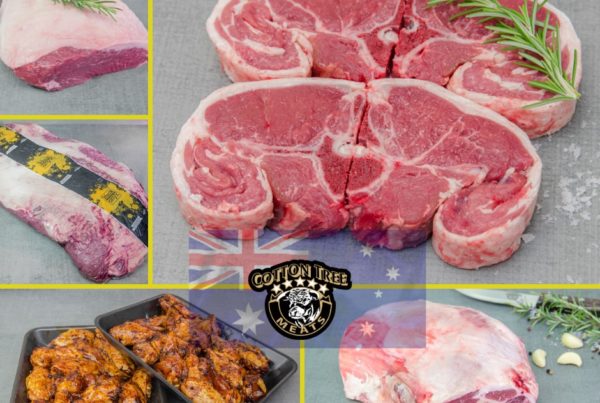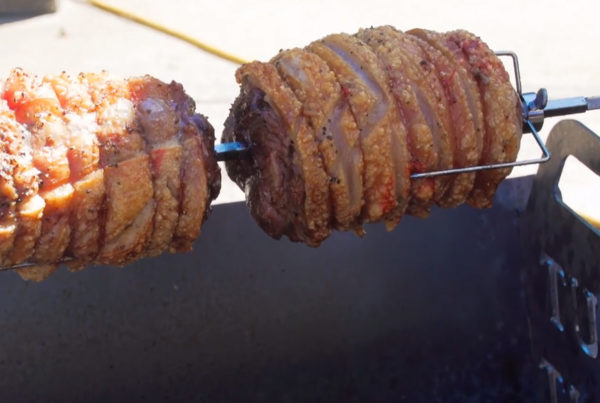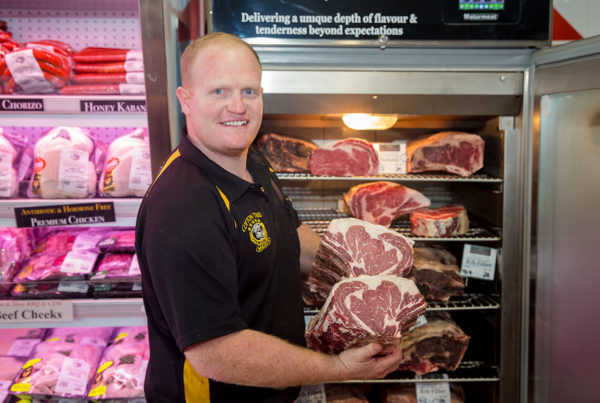
Why all meat should rest after cooking
As meat is cooked the proteins in the meat heat up and set. The more cooked the meat, the more ‘set’ the proteins have become.
This is why we can judge a piece of meat’s doneness by prodding it with tongs – the firmer the meat, the more ‘done’ it is. When the proteins set they push the meat’s juices towards the centre of the meat.
Allowing the meat to stand away from the heat before serving allows the juices, which have been driven to the centre of the meat to redistribute throughout the meat and be reabsorbed. As a result the meat will loose less juice when you cut it and be far more tender and juicy to eat.
How to rest the meat
Take it from the heat and place it on a warm plate or serving platter. Cover the meat loosely with foil. If you cover it tightly with the foil or wrap it in foil, you will make the hot meat sweat and lose the valuable moisture you are trying to keep in the meat.
How long should meat rest
If given the time to rest the meat will lose less juice when you cut it and when you eat it the meat will be juicier and tastier.
The time taken to rest will depend on its size, a roast is best rested for 10 to 20 minutes before carving. Steaks or chops should stand for 5 minutes (but no less than 3) before serving.
A rule of thumb used by some chefs is 1 minute resting time for every 100g of meat.




